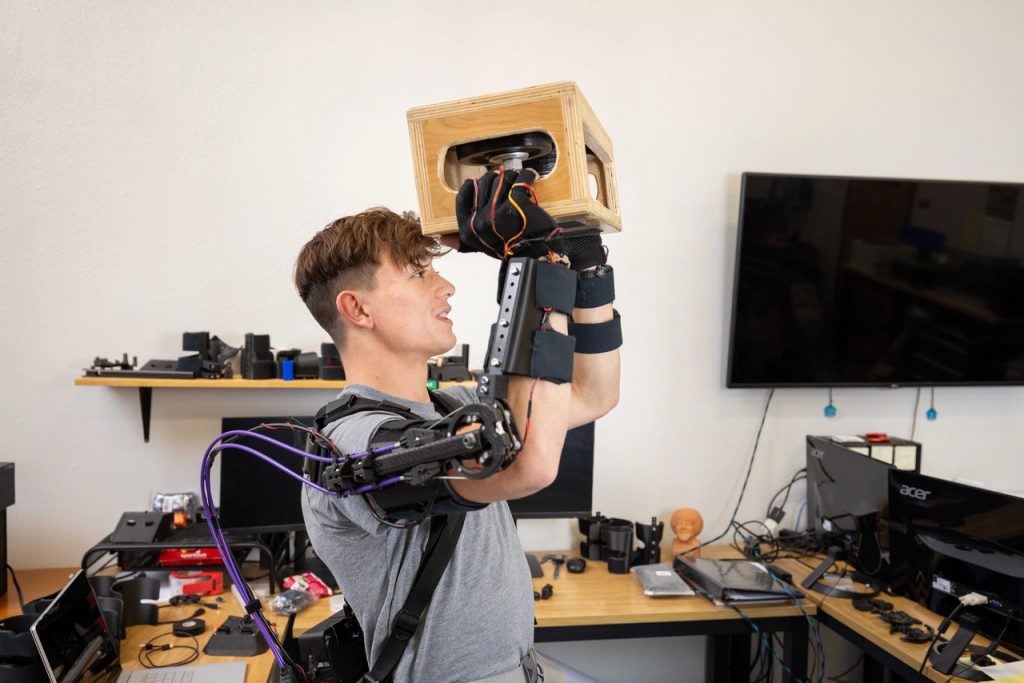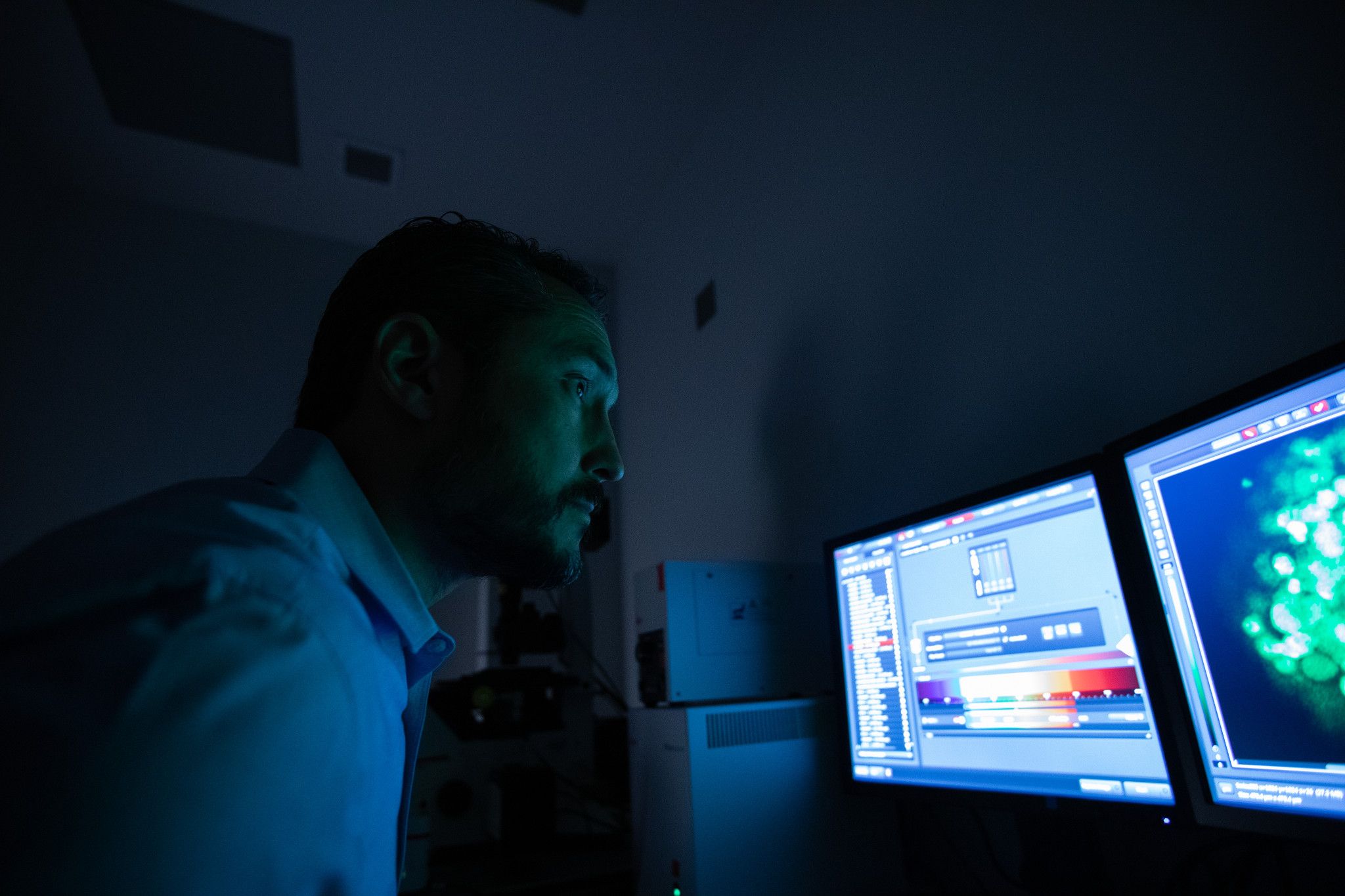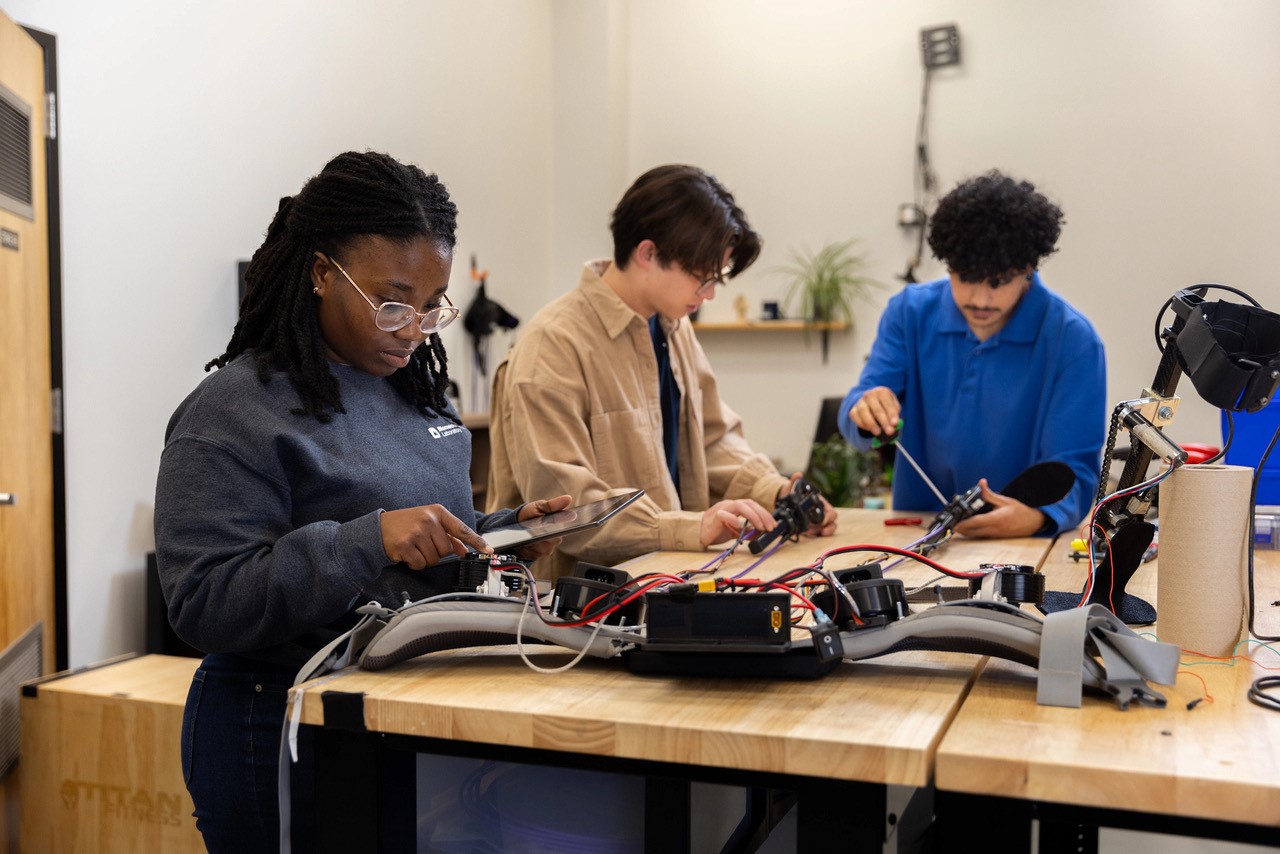For National Inventors Day, hear from two NAU researchers whose work has produced groundbreaking inventions in wound healing and exoskeletons that help children with cerebral palsy walk—so groundbreaking, in fact, that they applied for and received patents for their innovations. Learn more about the patent process, NAU Innovations and I-Corps, a new program designed to help inventors through the development and commercialization process.
How much innovation goes into healing wounds?
It’s a lot. Everything from the basic bandage and antibiotic gel to novel biomaterials that treat wounds that won’t heal required somebody to come up with an idea, test it, create a product that worked and then patent it and take it to market.
It’s a lengthy process, and one that Robert Kellar, director of the Tissue Engineering & Regenerative Medicine Lab at NAU, has been through more than once. Kellar’s lab, which works at the intersection of biological sciences and mechanical engineering, is developing novel technologies to treat contaminated skin wounds that won’t heal. The lab is currently working in conjunction with NAU’s Innovation Corps (I-Corps) on a portfolio of patents focused on using ionic liquids as a potent antimicrobial incorporated into wound healing scaffolds.
Kellar isn’t the only Lumberjack patenting new technologies. For National Inventors Day on Feb. 10, learn more about a couple of the inventors at NAU, the various patents they hold and I-Corps, a new collaborative initiative that aims to streamline technology development and commercialization among NAU’s innovators.
What is I-Corps?
In early 2023, NAU became part of the National Science Foundation’s Desert and Pacific Region I-Corps Hub. The I-Corps provides training for teams working on inventions with the aim of commercialization. Teams with an innovation or idea for a potential solution sign up for the five-week virtual program and then use that training to gather important insights on how to maximize the impacts of an innovation.
Once that training is completed, it opens opportunities for additional resources, including a small amount of funding to bring an idea to fruition.
“One primary reason commercializing research fails is because the technology does not address the customers’ actual needs,” I-Corps program director Cristy Salanga said. “The NSF I-Corps program is a nationwide entrepreneurial curriculum that prepares researchers with skills to enable them to understand the potential of their scientific research and to make an impact.”
Individuals or teams at NAU can enroll in one of the upcoming training opportunities this year. Learn more and register at the Desert and Pacific Region I-Corps Hub’s website.
Get to know two of NAU’s inventors
Kellar, who recently completed the training to be an I-Corps instructor and help other innovators through the process, has a long career in the development of medical devices, cell-based products and tissue-engineered technology, including for W.L. Gore and Associates and Development Engineering Sciences, a biomedical consulting firm he founded. He has seven issued United States patents, numerous international issued patents and a number of pending patents, all of which fall into three categories: composition of matter, method of manufacture and method of use.
This has been his goal for decades: “In graduate school, my mentor introduced me to the patent landscape with his inventions. I was immediately hooked.”
Even if “inventor” is your dream job, Kellar said, the process is time-consuming and challenging—even after you’ve developed an invention. Kellar said applying for a patent requires that the applicant demonstrate that their idea is “non-obvious to someone skilled in the art” and that it’s novel. Pursuing a patent can be expensive and can take years: Kellar’s longest patent took almost eight years to issue.
Zach Lerner, an associate professor of mechanical engineering, has gone through the patent process several times for work produced in his Biomechatronics Lab. He seeks to improve mobility and neuromuscular function in people with disabilities through advancing robotic exoskeletons, including inventing new wearable robots to help people perform tasks like climbing stairs and lifting heavy objects. His lab’s latest work includes testing these devices in home and community settings.
To file a patent, he works with student researchers in the lab to write and submit an intellectual property (IP) disclosure to NAU Innovations. If the IP has merit, he works with a patent attorney to draft the claims to submit to the U.S. Patent Office. Their upcoming collaboration with I-Corps, which will be led by doctoral student Emmanuella Tagoe, is looking into commercialization of a novel, low-cost wearable ankle rehabilitation system.
“Motivation is key,” Lerner said of the creation and commercialization process. “Our research combines the two great passions in my life, robots and human movement, which has led to the design of state-of-the-art robotic devices and interventions for people with disabilities. The biggest factor has been knowing that our inventions are poised to improve quality of life for many people who struggle to walk.”









